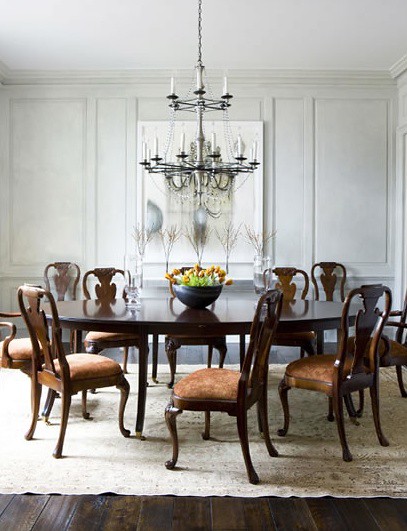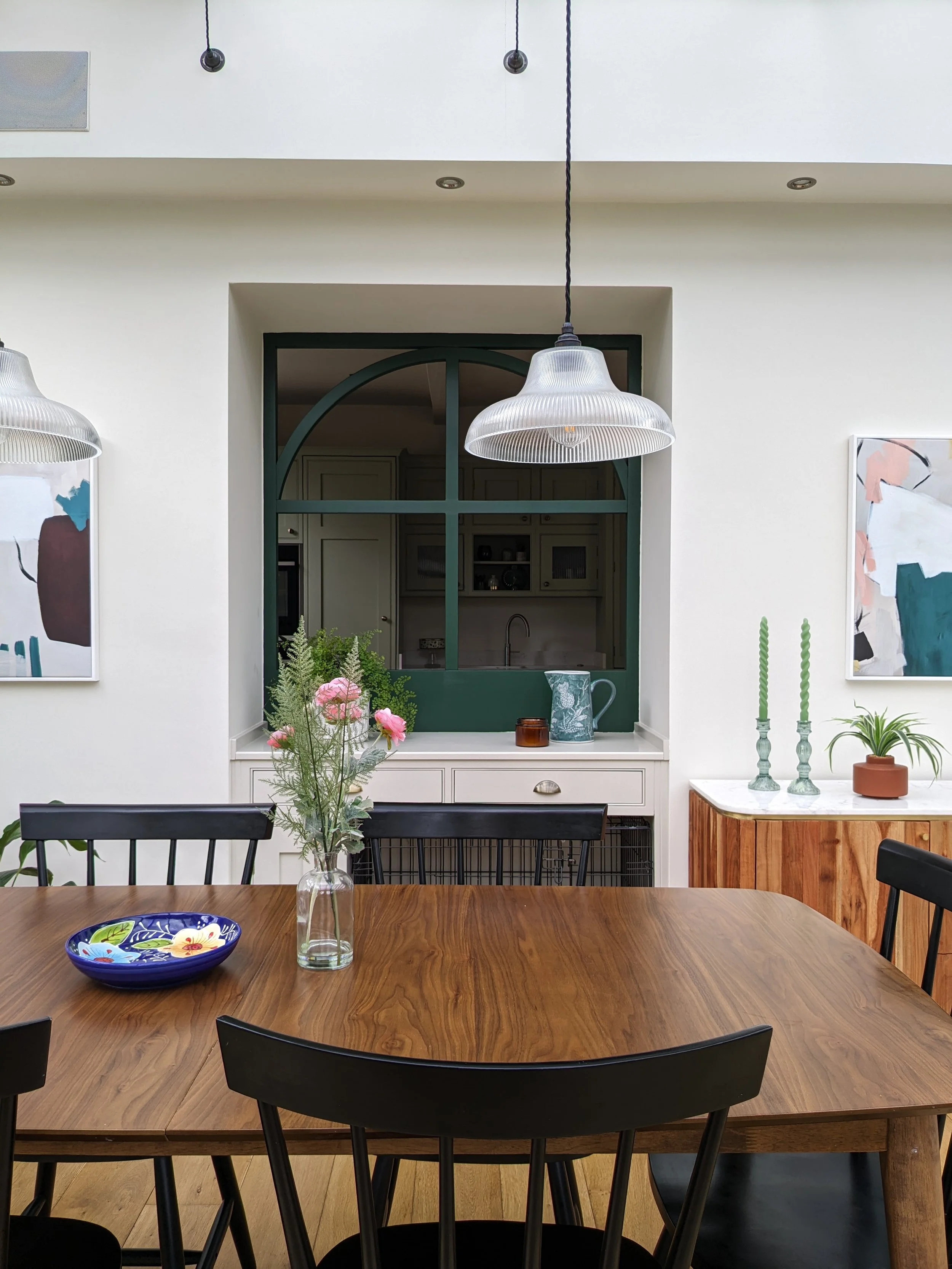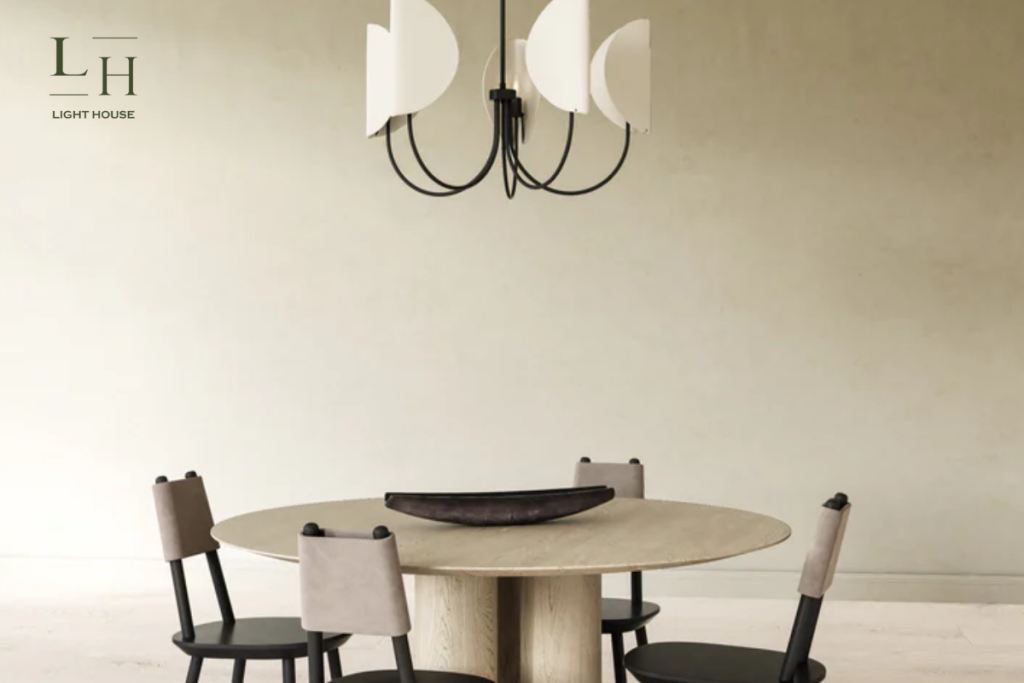Choosing the perfect chandelier height above your dining table can change the entire feel of your room. If it’s too low, it might block your view or make the space feel cramped.
Too high, and it won’t create the cozy, inviting glow you want during meals. You might wonder, “How far above the dining table should the chandelier be? ” This simple detail can make your dining area look stylish and balanced or awkward and out of place.
Keep reading, and you’ll discover the easy rules that help you get it just right every time.
Ideal Height For Chandeliers
The ideal height for hanging a chandelier above a dining table balances style and function. The right height lets the light spread evenly without blocking views. It creates a cozy atmosphere and keeps the space comfortable for everyone seated. Understanding the basics helps you find the perfect fit for your room.
Standard Distance Above Table
Most designers recommend hanging a chandelier 30 to 36 inches above the dining table. This range fits most ceiling heights and table sizes. It keeps the light focused on the table while avoiding glare. Keep in mind, this is a general guide and may need changes based on your room.
Adjusting For Ceiling Height
Ceiling height changes the ideal chandelier height. For ceilings higher than 8 feet, add 3 inches for every extra foot. For example, a 10-foot ceiling means the chandelier should hang about 36 to 42 inches above the table. Lower ceilings need shorter drops to avoid crowding the space.
Considering Table Size
Table size affects chandelier height and width. Larger tables need bigger chandeliers hung slightly higher. Smaller tables look best with smaller fixtures hung a bit lower. A good rule is to keep the chandelier width about half to two-thirds the table width. This keeps the lighting balanced and visually pleasing.

Credit: www.thingsthatinspire.net
Types Of Chandeliers
Choosing the right type of chandelier for your dining table is more than just a style decision. It also affects how high the fixture should hang. Different chandelier sizes and designs call for different height placements to balance the room and provide adequate lighting.
Small Vs Large Fixtures
Small chandeliers work well over compact tables or in rooms with lower ceilings. They don’t overpower the space, so you can hang them slightly lower without feeling cramped.
Large fixtures, on the other hand, demand more vertical clearance. They need to be hung higher to avoid blocking sightlines or overwhelming the table below. A big chandelier too close can make the room feel crowded and reduce comfort during meals.
Think about the width and height of your fixture before deciding how far it should be from the table. Have you ever noticed how a bulky chandelier can steal attention away from your dining experience?
Impact On Height Placement
The size and shape of your chandelier directly influence the ideal hanging height. Smaller fixtures can sit closer to the table, typically 28 to 34 inches above, to create a cozy atmosphere.
With larger chandeliers, aim for 34 to 40 inches or more to maintain balance and avoid obstructing views across the table. The goal is to light the table well without distracting or hitting anyone’s head.
Also consider the ceiling height. Higher ceilings allow you to hang bigger chandeliers comfortably, while lower ceilings may require smaller or more compact designs.
Have you measured your space before picking your chandelier? This simple step can save you from awkward adjustments later.
Room And Lighting Effects
A chandelier should hang about 30 to 36 inches above the dining table for the best lighting effect. This height creates a cozy atmosphere without blocking views or causing glare. Proper placement enhances both room style and function.
Understanding the ‘Room and Lighting Effects’ is crucial when deciding how high to hang your chandelier above the dining table. The right height can transform the ambiance, influencing not only the light but also the mood of your dining space. A well-placed chandelier can highlight your table setting, create an inviting atmosphere, and contribute to the overall aesthetic of the room.Ambient Vs Task Lighting
Ambient lighting refers to the overall illumination of the room. It sets the mood and helps in creating a warm and welcoming environment. Task lighting, on the other hand, is focused and functional, aimed at assisting specific activities like reading or dining. When choosing the height of your chandelier, consider whether you want to emphasize ambient or task lighting. A chandelier hung lower can act as task lighting, providing direct light for the dining table. If it’s hung higher, it contributes more to ambient lighting, spreading light throughout the room.Balancing Light And Space
Balancing light and space is essential for a harmonious dining room. A chandelier that’s too low can make the room feel cramped, while one that’s too high might not provide enough light for the table. Consider the size of both the room and the chandelier. A larger room or table may require a larger or more elaborate chandelier, which might need to hang slightly higher to keep the space open. Think about your dining habits. If you frequently host dinner parties, you might want the chandelier to be more of a focal point. A good rule of thumb is to hang the chandelier 30 to 36 inches above the table for an 8-foot ceiling, adjusting three inches higher for each additional foot of ceiling height. How does your chandelier placement affect the room’s ambiance? Do you prefer a cozy, intimate setting or a more open, airy feel? By considering these aspects, you can create a dining space that is both practical and beautiful.Safety And Practical Tips
Ensuring your chandelier is both beautiful and safe requires careful attention to certain practical details. Proper height above the dining table plays a big role in preventing accidents and ensuring the fixture functions well. Let’s look at key safety tips that help you avoid common pitfalls and keep your dining area inviting and hazard-free.
Avoiding Head Bumps
One of the main safety concerns with chandeliers is people accidentally hitting their heads. You want enough clearance so everyone can move comfortably without ducking or bumping into the fixture.
A good rule is to hang the chandelier about 30 to 36 inches above the surface of your dining table. This height gives ample space for taller guests while keeping the light close enough to create a cozy atmosphere.
Consider the size of your chandelier too. Larger, more dramatic fixtures may need to hang higher to avoid becoming an obstacle. Have you noticed how some chandeliers feel like they hover just right, while others seem to invade your space? That difference often comes down to this simple measurement.
Ensuring Proper Installation
Even the perfect height won’t matter if your chandelier isn’t installed correctly. Secure mounting is essential to prevent it from loosening or falling over time.
Make sure the electrical box in your ceiling can support the weight of your chandelier. If you’re unsure, consulting a professional electrician is worth the peace of mind.
Also, check that all wiring is done safely and follows local codes. Improper wiring can lead to electrical hazards or flickering lights that spoil your dining experience.
Have you ever seen a chandelier that wobbles or tilts? That’s usually a sign of poor installation. Taking time to install it properly avoids these annoyances and keeps your space safe.
Style And Design Considerations
Choosing the right height for your chandelier isn’t just about measurements—it’s also about style and design. The fixture should blend with your room’s overall look while enhancing the dining experience. Paying attention to design details helps you avoid awkward placements that feel out of place or overwhelm the space.
Matching Chandelier To Decor
Your chandelier should reflect the style of your dining room. If your decor is modern, sleek fixtures with clean lines work best. Traditional rooms often call for ornate chandeliers with crystals or intricate metalwork.
Think about the materials and colors in your room. A brass chandelier may clash with stainless steel appliances, while a black wrought iron fixture can add warmth to a rustic setting. Matching these elements creates a cohesive look that feels intentional.
Creating Visual Balance
Visual balance means the chandelier should feel like it belongs in the space, not like it’s hanging awkwardly. The size and height play a key role here. Too low, and it crowds the table; too high, and it loses impact.
Consider the ceiling height and table size. A large chandelier might overpower a small table, while a tiny fixture can get lost over a big dining setup. You want the chandelier to draw eyes upward but not distract from the meal.
Ask yourself: Does the chandelier complement the room’s scale and furniture? Trying different heights and sizes before installation can save you from a look that feels off.

Credit: www.create-enjoy.com
Common Mistakes To Avoid
Choosing the right height for your chandelier above the dining table can make or break the room’s ambiance. Many people make simple mistakes that can throw off the balance and feel of the space. Avoiding these common errors helps you create a dining area that feels inviting and well-designed.
Too High Or Too Low Placement
Placing the chandelier too high can make the room feel disconnected and cold. It loses its purpose of providing focused light and warmth over the table.
On the other hand, hanging it too low can obstruct views and make the space feel cramped. It can also be a hazard if guests bump their heads or if the light bulbs glare directly into your eyes.
Think about how you use your dining table daily. Could you comfortably see and talk across the table without the chandelier blocking your sightline? If not, it’s time to adjust the height.
Ignoring Room Proportions
Many overlook the size and shape of the room when deciding chandelier height. A large chandelier hung too low in a small room overwhelms the space.
Conversely, a tiny chandelier placed too high in a large room looks lost and ineffective. The fixture should match the room’s scale, ceiling height, and table size.
Ask yourself, does the chandelier feel balanced with your dining table and room? If it feels off, consider resizing or repositioning to respect the room’s proportions.

Credit: www.nospacelikehome.uk
Frequently Asked Questions
How High Should A Chandelier Hang Above The Dining Table?
A chandelier should hang 30 to 36 inches above the dining table surface. This height ensures proper lighting without obstructing views or movement.
Does Ceiling Height Affect Chandelier Placement Above The Table?
Yes, higher ceilings require chandeliers to hang slightly higher. Maintain 7 feet clearance from the floor for optimal balance and safety.
What Size Chandelier Suits Different Dining Table Lengths?
Choose a chandelier about one-half to two-thirds the table’s width. This proportion creates a balanced and visually appealing focal point.
Can A Chandelier Be Too Low Over A Dining Table?
Yes, a chandelier hung too low can block sightlines and cause discomfort. Keep it high enough to avoid head bumps and maintain openness.
Conclusion
Choosing the right chandelier height makes your dining space cozy. Hang it too low, and people might bump their heads. Too high, and it loses its charm and light. Aim for about 30 to 36 inches above the table. This keeps the room bright and inviting.
A well-placed chandelier adds style without distraction. Remember, simple rules bring the best results. Enjoy your meals under the perfect light.





